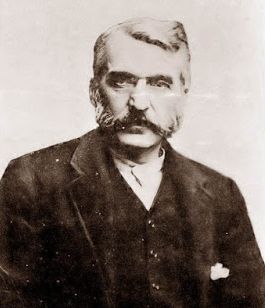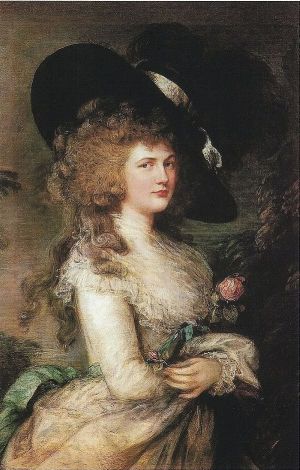The Clapham Society Local History Series — 14
The Real Moriarty
by Peter Jefferson Smith
This article first appeared in the South London Press on 6 January 2017

In 1886, a new tenant arrived at West Lodge, an old house on Clapham Common North Side. He was a wealthy American, called Henry J Raymond. He followed some pretty dubious previous tenants: one became bankrupt, another, a bank manager, was twice charged with embezzlement but acquitted. The Raymonds must have seemed a great improvement. Henry Raymond was about 40, his wife Louisa some ten years younger, and they had two young children. Henry was wealthy and a man of independent means, with a flat in Piccadilly, a string of racehorses and a yacht.
But he was not what he seemed: ‘Henry Raymond’ was actually Adam Worth, one of the most successful criminals of those times.
Adam Worth had started his career of crime in the American Civil War, by the practice of bounty jumping – enlisting to obtain a bounty payment, deserting and re-enlisting elsewhere under another name to get another bounty. He carried this to a new height by faking his own death at the second battle of Bull Run. The war ended, he rose through the criminal ranks in New York, starting as a pickpocket and progressing to forgery and bank robbery. He worked in partnership with ‘Piano’ Charley Bullard, a pianist and safebreaker.
Their activities culminated in 1869 with an audacious robbery of a bank in Boston, tunnelling from a nearby shop into the vaults and getting away with $200,000. They were now being pursued by the Pinkerton Detective Agency, so they did a timely bunk to Liverpool. There ‘Piano’ Charley married an attractive Irish barmaid, Kitty Flynn. She was to bear two children, claimed as his by Bullard, but widely believed to have been fathered by Worth.
The trio moved on to Paris, where they ran a restaurant which concealed an illegal gambling den. This came to the attention of William Pinkerton; so after defrauding a diamond dealer, they moved to London. In London, now calling himself Henry Raymond, Worth married an English woman and had two further children. He ran an international criminal gang, for which he was the controller, banker and main beneficiary. He was well known to the police and the house in Clapham was regularly under police surveillance; but he was never caught. One Scotland Yard inspector referred to him as ‘the Napoleon of the criminal world’, and this phrase is believed to have caught the attention of Arthur Conan Doyle and inspired the creation of Sherlock Holmes’ antagonist, the villainous Professor Moriarty – ‘the Napoleon of crime’.

Worth’s most famous crime was committed in 1876, before he came to Clapham. Agnews, the West End art dealers, had recently auctioned Gainsborough’s portrait of Georgiana Duchess of Devonshire, for the then record sum of £10,500 (multiply by at least 100 to get to present-day values). The painting was still at Agnews when Worth broke in and stole it. He had intended to use it as a ransom, to get a member of his gang out of Newgate prison; but the plan came to nothing, and Worth decided to keep the painting for himself. He called it ‘the Lady’ and his relationship with it an ‘elopement’, and had a false-bottomed trunk made to transport and hide it.
Worth’s criminal activities expanded profitably until 1892. In that year he visited Liege in Belgium, where ‘Piano’ Charley was in gaol. Worth made a rash attempt to rob a mail-cart and was caught on the spot. Now exposed and ruined, he was sentenced to seven years hard labour in a Belgian prison. His wife, who had been unaware of his real character, became insane. The house at Clapham Common was bought by a builder and demolished.
Scotland Yard was well aware that Worth had the Gainsborough portrait hidden somewhere, and tried to get him to surrender it in return for early release, but he never would. However after his sentence had ended he was in poor health and after a lifetime of abstinence had taken to drink. Needing money for his children, he negotiated with Pinkertons, and reached a deal to return ‘the Lady’ for $25,000. In March 1901, the art dealer Morland Agnew travelled to a Chicago hotel. The painting was brought to him by an elderly bellboy, widely believed to have been Worth in disguise.
Shortly afterwards, Worth returned to London with his children and died there in 1902. He was buried in Highgate Cemetery, under the name of Henry J Raymond. ‘The lady’ had been sold by Agnews to the American millionaire J Pierpoint Morgan. It remained with his family until 1994, when it was bought by the Duke of Devonshire and is now back at Chatsworth House.